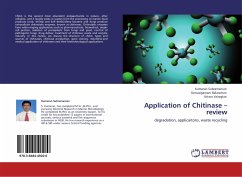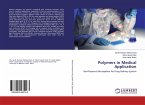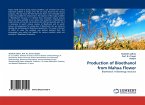Chitin is the second most abundant polysaccharide in nature, after cellulose, and it largely exists in wastes from the processing of marine food products (crab, shrimp and krill shells).Many bacteria and fungi produce extracellular chitinolytic enzymes, known as chitinases. Chitinolytic enzymes have wide-ranging applications such as pharmaceuticals, biomedical, single-cell protein, isolation of protoplasts from fungi and yeast, control of pathogenic fungi, drug deliver, treatment of chitinous waste and enzyme industry. In this review, we discuss the structure of chitin, types and sources of chitinases, chitinase production, gene cloning, industirial and medical application of chitinases and their biotechnological applications.
Hinweis: Dieser Artikel kann nur an eine deutsche Lieferadresse ausgeliefert werden.
Hinweis: Dieser Artikel kann nur an eine deutsche Lieferadresse ausgeliefert werden.








